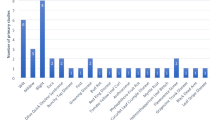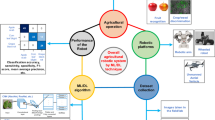Abstract
Increasingly, more effective breeding techniques for new variations are preferred due to population growth and climatic change, particularly the accurate identification of the target variety. Maize haploid breeding technology, which can shorten the reproductive period and improve germplasm, has become the key to new maize breeding. In this study, a method in which deep features and image patches are analyzed together was proposed using a dataset consisting of 3000 different haploid/diploid type maize seed images in total. To achieve this objective, we adopted convolutional neural networks (CNNs) to recognize haploid and diploid maize seeds automatically through a transfer learning approach. More specifically, DenseNet201, ResNet152, ResNetRS50, RegNetX002, EfficientNetV2B0, EfficientB0, EfficientB1, EfficientB2, EfficientB3, EfficientB4, EfficientB5, EfficientB6, and EfficientB7 were applied for this specific task. The proposed hybrid model is inspired by both transfer learning and vision transformers. The error, accuracy, f1-score, recall, precision, and AUC of hybrid proposed model were 0.1491, 0.9633, and 0.9712, respectively. The accuracy rate reached, and the proposed model requires less processing in terms of complexity, which reveals the need for further investigation of such hybrid models. On the other hand, with the results obtained, it has been revealed that the maize seeds can be separated as haploid and diploid with traditional methods can be done much faster and without the need for an expert decision.









Similar content being viewed by others
Data availability
Data can be found in this link (http://rovile.org/datasets/haploid-and-diploid-maize-seeds-dataset/).
References
Haque, M.A., et al.: Deep learning-based approach for identification of diseases of maize crop. Sci. Rep. 12(1), 1 (2022). https://doi.org/10.1038/s41598-022-10140-z
Xu, P., Yang, R., Zeng, T., Zhang, J., Zhang, Y., Tan, Q.: Varietal classification of maize seeds using computer vision and machine learning techniques. J. Food Process Eng. 44(11), e13846 (2021). https://doi.org/10.1111/jfpe.13846
Altuntaş, Y., Cömert, Z., Kocamaz, A.F.: Identification of haploid and diploid maize seeds using convolutional neural networks and a transfer learning approach. Comput. Electron. Agric. 163, 104874 (2019). https://doi.org/10.1016/j.compag.2019.104874
Altuntaş, Y., Kocamaz, A.F., Cengiz, R., Esmeray, M.: Classification of haploid and diploid maize seeds by using image processing techniques and support vector machines. In: 2018 26th Signal Processing and Communications Applications Conference (SIU), 2018, pp. 1–4. https://doi.org/10.1109/SIU.2018.8404800
Dönmez, E.: Enhancing classification capacity of CNN models with deep feature selection and fusion: a case study on maize seed classification. Data Knowl. Eng. 141, 102075 (2022). https://doi.org/10.1016/j.datak.2022.102075
Yu, L., Liu, W., Li, W., Qin, H., Xu, J., Zuo, M.: Non-destructive identification of maize haploid seeds using nonlinear analysis method based on their near-infrared spectra. Biosyst. Eng. 172, 144–153 (2018). https://doi.org/10.1016/j.biosystemseng.2018.05.011
Boote, B.W., Freppon, D.J., De La Fuente, G.N., Lübberstedt, T., Nikolau, B.J., Smith, E.A.: Haploid differentiation in maize kernels based on fluorescence imaging. Plant Breed. 135(4), 439–445 (2016). https://doi.org/10.1111/pbr.12382
De La Fuente, G.N., Carstensen, J.M., Edberg, M.A., Lübberstedt, T.: Discrimination of haploid and diploid maize kernels via multispectral imaging. Plant Breed. 136(1), 50–60 (2017). https://doi.org/10.1111/pbr.12445
Wang, X.-Y., Liao, W.-X., An, D., Wei, Y.-G.: Maize haploid identification via LSTM-CNN and hyperspectral imaging technology. arXiv. https://doi.org/10.48550/arXiv.1805.09105 (2018)
Altuntaş, Y., Kocamaz, A.F.: Comparison of the effect of color spaces on classification performance in identification of haploid maize seeds using color moments and support vector machines. Fırat Üniversitesi Mühendis. Bilim. Derg. 31(2), 2 (2019). https://doi.org/10.35234/fumbd.585312
Couto, E.G.D.O., Davide, L.M.C., Bustamante, F.D.O., Pinho, V.R.G., Silva, T.N.: Identification of haploid maize by flow cytometry, morphological and molecular markers. Ciênc. E Agrotecnologia 37(1), 25–31 (2013). https://doi.org/10.1590/s1413-70542013000100003
Lin, J., Yu, L., Li, W., Qin, H.: Method for identifying maize haploid seeds by applying diffuse transmission near-infrared spectroscopy. Appl. Spectrosc. 72(4), 611–617 (2018). https://doi.org/10.1177/0003702817742790
Song, P., Zhang, H., Wang, C., Luo, B., Zhang, J.X.: Design and experiment of a sorting system for haploid maize kernel. Int. J. Pattern Recognit. Artif. Intell. (2018). https://doi.org/10.1142/S0218001418550029
Wang, Y., et al.: Identification of maize haploid kernels based on hyperspectral imaging technology. Comput. Electron. Agric. (2018). https://doi.org/10.1016/j.compag.2018.08.012
Huang, M., He, C., Zhu, Q., Qin, J.: Maize seed variety classification using the integration of spectral and image features combined with feature transformation based on hyperspectral imaging. Appl. Sci. 6(6), 183 (2016). https://doi.org/10.3390/APP6060183
Xia, C., Yang, S., Huang, M., Zhu, Q., Guo, Y., Qin, J.: Maize seed classification using hyperspectral image coupled with multi-linear discriminant analysis. Infrared Phys. Technol. 103, 103077 (2019). https://doi.org/10.1016/J.INFRARED.2019.103077
Huang, S., Fan, X., Sun, L., Shen, Y., Suo, X.: Research on classification method of maize seed defect based on machine vision. J. Sens. 2019, 1–9 (2019). https://doi.org/10.1155/2019/2716975
Xu, P., Tan, Q., Zhang, Y., Zha, X., Yang, S., Yang, R.: Research on maize seed classification and recognition based on machine vision and deep learning. Agriculture 12(2), 232 (2022). https://doi.org/10.3390/AGRICULTURE12020232
Aktaş, A., Demir, Ö., Doğan, B.: Tactile paving surface detection with deep learning methods. Gazi Üniversitesi Mühendis. Mimar. Fakültesi Derg. 35(3), 3 (2020). https://doi.org/10.17341/gazimmfd.652101
Kilicarslan, S., Adem, K., Celik, M.: Diagnosis and classification of cancer using hybrid model based on ReliefF and convolutional neural network. Med. Hypotheses 137, 109577 (2020). https://doi.org/10.1016/j.mehy.2020.109577
Kiliçarslan, S., Celik, M.: RSigELU: a nonlinear activation function for deep neural networks’. Expert. Syst. Appl. 174, 114805 (2021). https://doi.org/10.1016/j.eswa.2021.114805
Barua, P.D., et al.: Multilevel hybrid accurate handcrafted model for myocardial infarction classification using ECG signals. Int. J. Mach. Learn. Cybern. (2022). https://doi.org/10.1007/s13042-022-01718-0
Diker, A., Sönmez, Y., Özyurt, F., Avcı, E., Avcı, D.: Examination of the ECG signal classification technique DEA-ELM using deep convolutional neural network features. Multimed. Tools Appl. 80(16), 24777–24800 (2021). https://doi.org/10.1007/s11042-021-10517-8
Diker, A.: An efficient model of residual based convolutional neural network with Bayesian optimization for the classification of malarial cell images. Comput. Biol. Med. 148, 105635 (2022). https://doi.org/10.1016/j.compbiomed.2022.105635
Kilicarslan, S., Celik, M., Sahin, Ş: Hybrid models based on genetic algorithm and deep learning algorithms for nutritional anemia disease classification. Biomed. Signal Process. Control 63, 102231 (2021). https://doi.org/10.1016/j.bspc.2020.102231
Kiliçarslan, S.: PSO + GWO: a hybrid particle swarm optimization and Grey Wolf optimization based algorithm for fine-tuning hyper-parameters of convolutional neural networks for cardiovascular disease detection. J. Ambient Intell. Humaniz. Comput. (2022). https://doi.org/10.1007/s12652-022-04433-4
Adem, K., Közkurt, C.: Defect detection of seals in multilayer aseptic packages using deep learning. Turk. J. Electr. Eng. Comput. Sci. 27(6), 4220–4230 (2019)
Elen, A.: Covid-19 detection from radiographs by feature-reinforced ensemble learning. Concurr. Comput. Pract. Exp. 34(23), e7179 (2022). https://doi.org/10.1002/cpe.7179
Ozguven, M.M., Yilmaz, G., Adem, K., Kozkurt, C.: Use of support vector machines and artificial neural network methods in variety improvement studies: potato example. Curr. Investig. Agric. Curr. Res. 6(1), 1–7 (2019)
Howard, A.G., et al.: MobileNets: efficient convolutional neural networks for mobile vision applications. arXiv. https://doi.org/10.48550/arXiv.1704.04861 (2017)
Simonyan, K., Zisserman, A.: Very deep convolutional networks for large-scale image recognition. arXiv. https://doi.org/10.48550/arXiv.1409.1556 (2015)
Krizhevsky, A., Sutskever, I., Hinton, G.E.: ImageNet classification with deep convolutional neural networks. Commun. ACM 60(6), 84–90 (2017). https://doi.org/10.1145/3065386
Tan, M., Le, Q.: EfficientNet: rethinking model scaling for convolutional neural networks. In: Proceedings of the 36th International Conference on Machine Learning, May 2019, pp. 6105–6114. Accessed: Dec. 05, 2022. [Online]. Available: https://proceedings.mlr.press/v97/tan19a.html
Huang, G., Liu, Z., van der Maaten, L., Weinberger, K.Q.: Densely connected convolutional networks. In: Presented at the Proceedings of the IEEE Conference on Computer Vision and Pattern Recognition, 2017, pp. 4700–4708. Accessed: Dec. 05, 2022. [Online]. Available: https://openaccess.thecvf.com/content_cvpr_2017/html/Huang_Densely_Connected_Convolutional_CVPR_2017_paper.html
He, K., Zhang, X., Ren, S., Sun, J.: Deep residual learning for image recognition. In: Presented at the Proceedings of the IEEE Conference on Computer Vision and Pattern Recognition, 2016, pp. 770–778. Accessed: Dec. 05, 2022. [Online]. Available: https://openaccess.thecvf.com/content_cvpr_2016/html/He_Deep_Residual_Learning_CVPR_2016_paper.html
Kung, H.T., McDanel, B., Zhang, S.Q.: Adaptive tiling: applying fixed-size systolic arrays to sparse convolutional neural networks. In: 2018 24th International Conference on Pattern Recognition (ICPR), 2018, pp. 1006–1011. https://doi.org/10.1109/ICPR.2018.8545462
Uçar, M.: Diagnosis of glaucoma disease using convolutional neural network architectures. Dokuz Eylül Üniversitesi Mühendis. Fakültesi Fen Ve Mühendis. Derg. 23(68), 68 (2021). https://doi.org/10.21205/deufmd.2021236815
Touvron, H., et al.: ResMLP: feedforward networks for image classification with data-efficient training. IEEE Trans. Pattern Anal. Mach. Intell. (2022). https://doi.org/10.1109/TPAMI.2022.3206148
Wassel, M., Hamdi, A.M., Adly, N., Torki, M.: Vision transformers based classification for glaucomatous eye condition. In: 2022 26th International Conference on Pattern Recognition (ICPR), 2022, pp. 5082–5088. https://doi.org/10.1109/ICPR56361.2022.9956086
Funding
The study was not supported by any funding.
Author information
Authors and Affiliations
Contributions
The authors contributed equally to the study.
Corresponding author
Ethics declarations
Conflict of interest
The authors declare no conflict of interest.
Ethical approval
There is no ethical situation related to this study.
Additional information
Publisher's Note
Springer Nature remains neutral with regard to jurisdictional claims in published maps and institutional affiliations.
Rights and permissions
Springer Nature or its licensor (e.g. a society or other partner) holds exclusive rights to this article under a publishing agreement with the author(s) or other rightsholder(s); author self-archiving of the accepted manuscript version of this article is solely governed by the terms of such publishing agreement and applicable law.
About this article
Cite this article
Dönmez, E., Kılıçarslan, S., Közkurt, C. et al. Identification of haploid and diploid maize seeds using hybrid transformer model. Multimedia Systems 29, 3833–3845 (2023). https://doi.org/10.1007/s00530-023-01174-y
Received:
Accepted:
Published:
Issue Date:
DOI: https://doi.org/10.1007/s00530-023-01174-y




